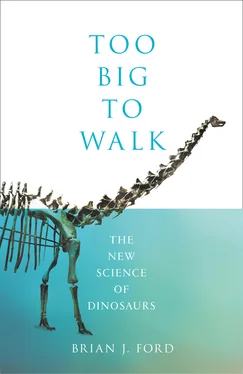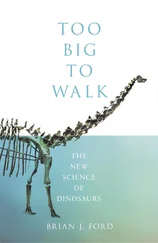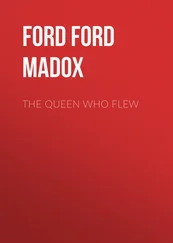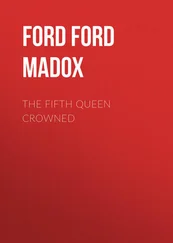Owen’s first professional task was to assist William Clift, conservator of the Royal College of Surgeons, in cataloguing the collection of 13,000 human and zoological specimens that had been amassed by the eminent surgeon John Hunter. A previous custodian of the papers had been Sir Everard Home, that unscrupulous surgeon who had published many of Hunter’s discoveries as his own, and who set fire to the entire archive when an investigation into his conduct loomed near. It fell to Owen to identify what remained in order to rebuild the list. By 1830 he had sorted the documents and identified every anatomical specimen, and was about to publish the full catalogue of the Hunterian Collection. By that time he was accepted as the main authority on Hunter’s voluminous work. In July 1835 he married Clift’s daughter, Caroline Amelia, and they had one son, William. In 1837 Owen was charged with delivering the first series of Hunterian Public Lectures, and his reputation grew to such an extent that he was appointed to teach natural history to the children of Queen Victoria; but his professional attitude remained obdurate, demanding and unpleasant. Charles Darwin (who attended many of Owen’s lectures) wrote later that Owen became his enemy after the Origin of Species was published ‘not owing to any quarrel between us, but as far as I could judge out of jealousy at its success.’
Fossil dinosaurs were also being discovered elsewhere in England. In the late summer of 1834, the curator of the Bristol Institution, Samuel Stutchbury, accompanied his surgeon friend Henry Riley on an expedition to Clifton. Riley had been intrigued by the news of the newly discovered ‘saurian’ fossils and took his friend to prospect in the quarry of Durdham Down, on the outskirts of Bristol. There were repeated reports of strange bones being discovered by quarrymen. It seemed that these bones might also be from gigantic prehistoric reptiles, and a short report was published in the U.S. in 1835.45
Theirs proved to be a small dinosaur, measuring some 6 feet 6 inches (2 metres) in length and weighing no more than 55 pounds (25 kg). The men were a diligent pair of investigators and they made a significant observation: in lizards, the roots of the teeth merge with the jawbone, but they noted that their dinosaur was different. It possessed tooth sockets, much like those of mammals. In their formal paper the following year they gave their discovery its name: Thecodontosaurus , derived from the Greek θήκή ( thēkē , socket) and οδους ( odous , tooth) – so here was yet another new dinosaur for scientists to study.46
Their searches also turned up teeth of phytosaurian dinosaurs that they named Paleosaurus cylindrodon and P. platyodon . Although they didn’t know it, that generic name had already been thought up by Étienne Geoffroy Saint-Hilaire, so the proposed name was soon abandoned. As Thecodontosaurus this became the fifth dinosaur to be academically named, following Megalosaurus , Iguanodon , Streptospondylus and Hylæosaurus . The fossil was later provided with an appropriate species name, T. antiquus .
Palæontology has long attracted peculiar people, and few were more eccentric than a collector named Thomas Hawkins. Although we imagine the early palæontologists trudging across barren rocks and scrambling into quarries, many of them, as we have seen, adopted a more leisurely approach – they simply purchased specimens dug up by quarrymen, or bought them from specialist dealers like Mary Anning. The young Hawkins was loquacious, brash and bullying, difficult to get on with and given to outbursts of pugnacious prose. He was the son of a wealthy farmer who, rather than encouraging his wayward son to work with him on the family farm in Somerset, gave him a generous allowance to stay away. As a result, the young Hawkins was able to indulge his new passion for fossil collecting and proudly boasted that, by the age of 20 (in 1830), he already had a large and varied collection. He used to wander round the quarries near Walton and Street in Somerset, watching out for discoveries the quarrymen were making. On several occasions, he saw a priceless fossil in a slab of rock that a worker was about to break up and he promptly stepped in with an offer of largesse that could not be refused. He soon gained a reputation for being someone who would pay good money for these fossils whenever they came to light, and so his collection grew, while he had no need to soil his hands by digging. Yet he soon encountered a problem faced by every collector: fossil remains were hardly ever complete. Quite often, valuable fragments were lost as stone was chipped away from the specimen. Dinosaur skeletons usually had limbs missing and often there was no skull (as in the case of Anning’s first ichthyosaur, and the Brontosaurus later described by Marsh). Early in his career, Hawkins became adept at cleaning up fossils and replaced any parts that were missing with dyed plaster. Today, it is acceptable to create an entire dinosaur skeleton from just a few fossil fragments, but at that time any restoration was frowned upon. Mantell summed up Hawkins perfectly as ‘a very young man who has more money than wit’.
Hawkins was a proselytizing Christian and firmly believed in Adam and Eve. Yet he also followed the latest trends in scientific discovery, and formed the view that fossils could reveal what the world was like before humans had been created. The early Earth, he thought, was an alien and hostile place, bathed in murky darkness that sunlight could not penetrate, and peopled by strange monstrous beings that were intent on destruction. On one of his casual visits to a quarry, he found that the tail of a huge ichthyosaur had been laid bare by a workman. The men had agreed to dig out the rest in a few days’ time, but Hawkins was insistent that the job should be done at once. It was already dusk – but he made them fetch candles and lamps, and work on through the night. Eventually, the rocky strata bearing the fossil were laid out in pieces on a wagon, ready to be transported to Hawkins’ home on the farm. It took him several weeks to chip away the rock to release the whole animal, but in the end he was confronted by an ichthyosaur measuring some 7 feet (2 metres) from nose to tail. The hunks of rock bearing the skeleton were assembled together in a wooden frame, and the result was an entire animal – or almost entire. Whatever was missing, Hawkins created out of plaster that he carefully stained to match the rest of the rock. This gave a convincing result – at least, it did for anybody who wanted to be impressed by the entire creature. For the palæontologists of the time, it posed problems. If you were not certain whether the fossil was entire, it was impossible to tell the real fossil from the replacement plaster, so describing the skeleton accurately would be scientifically invalid.
None of this mattered to the irrepressible and domineering Hawkins. Within a few weeks he had himself forgotten which parts of a fossil were original and which he had created from plaster. The creature looked impressive in its apparent completeness, and that was all that mattered to him. His wish was not to pursue scholarship, but to exhibit monsters from a bygone age. If they had pieces missing, he felt it his duty to bring them back to a state of perfection – only then could their prehistoric magnificence be appreciated. His is a very modern attitude. Present-day palæontologists think nothing of recreating vast skeletons of imaginary dinosaurs from plastic, when in reality only a very few bones have been discovered. What was considered unprofessional in Hawkins’ time is carried out on a grander scale today.
In 1833 Hawkins heard that an ichthyosaur skeleton had emerged on low-lying rocks at Lyme Regis. He travelled to the town, and discovered that it could be accessed only at low tide. Hawkins paid a guinea for the finder to grant him the right to own the fossil (£1 1s, now worth about £60 or $80) and told him to assemble a group of workmen, ready to excavate the entire skeleton. He could not resist telling Mary Anning of his find, and she warned him that the rock in which this fossil lay was likely to crumble as it dried. She said it was marl, and she knew that it was rich in iron pyrites (fool’s gold, FeS2). For the next few days no work took place – storms blew in from the west and the beaches were suddenly inaccessible.
Читать дальше












